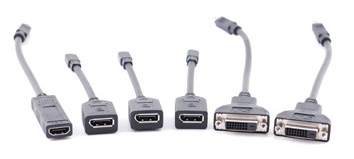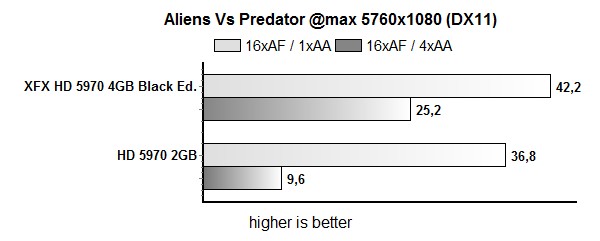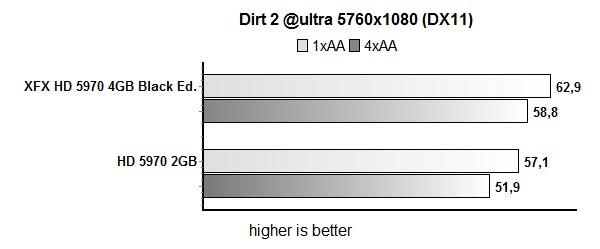Index
Playing games with the picture spanning across more monitors can be done with Nvidia or AMD cards, but although both teams have made significant advances, we’d still refrain from calling them finished articles. In this respect AMD has done much better as cards from HD 5000 series will take up to three monitors (Eyefinity editions will take up to 6) whereas three screens on Nvidia cards require SLI. This means you need two graphics cards (except for the GTX 295 with two DVIs and HDMI) since each GPU can only handle two screens.
Not everything is as grand as it seems though, as AMD Eyefinity requires one of the three monitors to be a DisplayPort version. Naturally, DisplayPort monitors don’t come cheap but thankfully there are alternatives. For ultra high resolutions, the alternative is an active DisplayPort/Dual-Link DVI adapter ($100) whereas for resolutions for up to 1920x1200 you can do with an active DisplayPort/Single-Link DVI which is ($30). Sapphire is one of the first to offer this adapter and you can check it out here.
The active DisplayPort/Single-Link DVI adapter will allow for a resolution of 5760x1200 (landscape) or 3600x1920 (portrait).
XFX ships a few adapters with its HD 5970 4GB Black Edition card, among which you’ll find two passive MiniDP-to-Single-Link DVI, one passive MiniDP-to-HDMI and three miniDP-to-DisplayPort adapters. This means that although the card has six video outs, if your three (or all six) monitors only have DVI ins, you’ll have to look for additional active MiniDP-to-DVI adapters. 
We tested with three 1920x1080 monitors (5760x1080) where one monitor had a DisplayPort video in .

Gaming at 5760x1080 is much more efficient with XFX HD 5970 4GB as the card not only runs overclocked, but it comes with twice the memory on the reference card.



